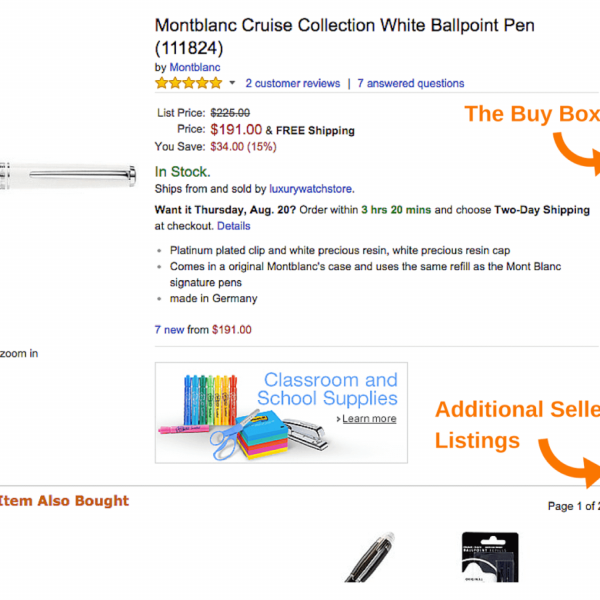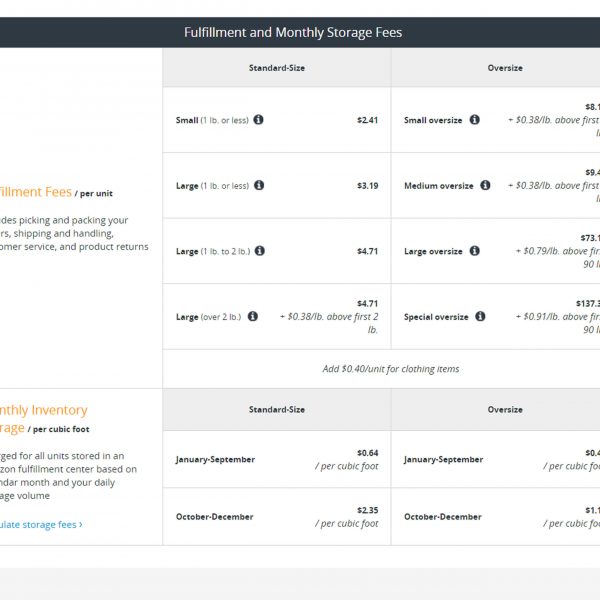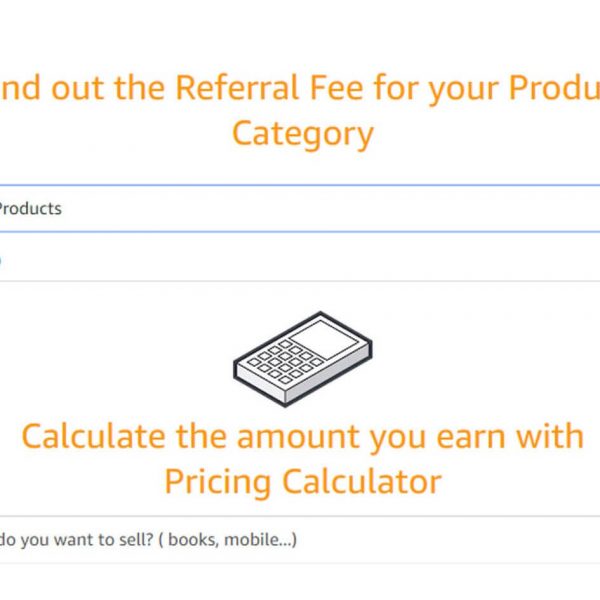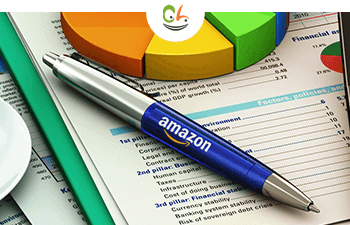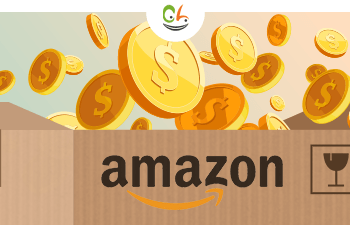I talked quite a lot about the various eBay fees and how to avoid them, in this post I will discuss the different types of Amazon fees that exist and how to reduce them. I will explain the difference between an Individual seller plan and a Professional seller plan. Read on in order to understand these differences and learn how to reduce Amazon fees on your transactions as effectively as possible.

Individual seller fees vs Professional seller fees
Amazon has two main selling plan options, each comes with its own set of fees as well as pros and cons. These options are:
An individual seller plan
The main advantage of this option is for people who plan on selling:
- One-off items
- Low quantities of products
Or people who simply want to test out the Amazon ecommerce platform before investing money in a pro account.
Disadvantages of an individual seller plan
The main disadvantages of this option include:
- Category restrictions – that is correct, Amazon restricts the categories you are able to sell items in including but not limited to collectibles and beauty products
- Manual listing – In the pro option Amazon provides you with Excel spreadsheet templates where you can fill in product titles and descriptions and upload products en mass but with the individual seller plan you are reduced to manually upload product by product
- Ineligibility for the Buy Box – As many of you may know Amazon has a rule of one page per product so for example if 100 people are selling Montblanc Cruise Ballpoint pens on Amazon there will only be one page. On the right side of that page Amazon displays one seller in what is called the ‘Buy Box’ which is the seller Amazon recommends shoppers buy from. This is determined and redetermined every 15 minutes based on Amazon’s algorithms. This box accounts for a high percentage of sales on Amazon but if you are an individual seller you are not eligible.
A professional seller plan
The pro account comes at a monthly fthird-party9 and in contrast with the individual account does not require you to pay a fee per sale. The Amazon fee is $1 per item so if you are planning to sell 40 times or more per month this option is your best bet.
The advantages of a professional seller plan
- Buy Box eligibility – Full eligibility to be included in the Buy Box ‘raffle’ which as I explained above is a huge benefit.
- Multiple product listing – This means Amazon provides you with a tool to upload tens, hundreds or thousands of items at a time instead of creating an individual listing for each product.
- Integrations and reporting features – This means Amazon will allow you to use and integrate third party tools such as inventory management or multi-channel inventory management tools. Additionally, Amazon offers its professional sellers ‘reporting tools’ such as professional selling plans and business reports.
- Promotions – The ability to run a wide array of promotions, from “giveaway” to “buy one get one free”. It can help you introduce more products to the market, generate feedbacks and improve your seller ranking.
- Multi-market listings – if you sell in the USA market, you can duplicate your listings to Canada and Mexico markets for free.
The main and only disadvantage, in my opinion, is for a newbie or low volume sellers who don’t reach the 40 item mark, otherwise I would recommend the ‘Pro Seller Plan’ – do keep in mind that you can switch or upgrade your account type at any point in time.
Amazon Seller fees
Listing products on Amazon is free – Amazon automatically takes their fees once your item has sold and forwards the rest to your account. These fees include:
- Shipping fees
- Referral fees
- Variable closing fees
Note that sellers using FBA or Fulfillment By Amazon have a separate set of fees to pay and are advised to use the Amazon FBA calculator. Fulfillment By Amazon is a service whereby you ship your product to an Amazon fulfillment center and they store and ship your item once it is sold. This is very convenient but comes with extra fees based on the size and weight of your product and the time of year that Amazon has to store it (due to peak and low seasons). Here is a chart which summarizes these fees:
Let’s go back to the main Amazon fees and break them down:
Amazon Shipping fees
These costs vary on the product size and weight and depending on which company you are using. Amazon also offers two day shipping but in order to qualify you must meet certain requirements such as:
- Selling on Amazon for 90 days
- Have less than a 1.5% cancellation rate
- Have 10 orders or more over the last 30 days across all the different shipping options
Amazon Referral fees
This is a fee which is separate from the per item fee that is charged on the ‘individual plan’ and obligates both category holders. The fees vary per item category and some have a per-item minimum referral fee – in which case you will have to pay the higher of the two options. For Example, let’s say the referral fee for sunglasses is $1 but the pair you are selling is a hundred dollars and the per-item minimum referral fee is 4% meaning $4 then you will not pay the $1 fee rather the higher of the two meaning $4.
Amazon Variable closing fees
This is a fee that Amazon has invented for items which they consider to fall under the ‘media’ category. This fee is hotly contested and detested by most individual sellers but alas if you want to sell on Amazon it comes at a price! The basic breakdown of VCF fees and products which are required to pay this fee are:
- Books $1.35
- DVDs $1.35
- Music $1.35
- Software & Computer/Video Games $1.35
- Video $1.35
- Video Game Consoles $1.35
How to reduce Amazon fees and increase profitability
Let’s delve into this starting with the three categories I mentioned above and see how you can save money on these fees:
Reduce Amazon Shipping fees
This is the area in my opinion where you have the most control over and can therefore save the most amount of money. There are various ways to save money on shipping:
- Priority Mail – If you are shipping relatively lightweight items such as phone covers or action figures you can opt to use the US post office Priority Mail option which provides you with a free box and more often than not comes out cheaper than the Flat Rate box option
- Online labels – Another easy trick is to print your postage online which gets you a cheaper postage rate and a postal tracking service for free which can help you improve your customer service by always knowing where your products are
- Free packing materials – Talk to local vendors about allowing you to pick up their used boxes and tissue paper or post that you are looking for these supplies on Craigslist. You will be shocked how much money you can save a month on packing materials. Also consider using shredded newspapers and magazines in order to protect your product and double dip by telling your customers that your e-business is ‘green’ or environmentally conscientious.
- Negotiate – If you sell items every now and again then you have no leverage to bargain with but if you ship in serious quantities then I would recommend you pick up the phone to UPS or Fedex and ask them at what volume do they offer customers discounts and special rates. You may very well be able to chop a few percentage points off of your shipping costs.
- Pay attention to volume – Fedex and UPS now charge more based on volume than on weight so by sending two smaller boxes instead of one large box you can save a nice amount of cash especially if this method is repeated on a regular basis
Reduce Amazon Referral Fees
These fees are unavoidable as I mentioned above but what you can do is carefully choose your items based on how worthwhile they are to sell in general including their shipping costs but more importantly which categories have lower Referral fees! Referral fees can range from 6-20% or $0-2 if the item is under the minimum fee. Using Amazon’s Referral Fee Calculator I looked to see what the fee was for 5 separate categories – this is what I found:
- Backpacks – 3% fee
- Books – 13% fee
- Fashion Jewellery – 20% fee
- Beauty products – 6% fee
- Baby products – 6% fee
Now we can see a clear ‘discrimination’ against Fashion Jewellery and books and a clear favoring of Backpacks, Beauty and baby products. So by mere merit of choosing the correct product to sell you can save hundreds of dollars in fees.
Reduce Variable closing fees
The best advice I have for people dealing in items which require them to pay VCF is to calculate carefully if it is worth their while to sell these items. If you are selling books for $5 and paying over 20% in VCF not including shipping and referral fees you are barely making a profit. But if your books are selling in the $30 range you are in good shape and VCF is more marginal.
Bonus ways to lower Amazon fees
Beyond these 3 categories there are other ways to save money and increase profitability on Amazon:
- Raise your Average Selling Price (ASP) – This will increase your profit margins and decrease your seller fees. The main thing to remember when talking about ASP is that no matter what category you are selling in, the higher your ASP the higher your profit margins. A good ASP to aim for is around $35. Consider the following examples which illustrate the benefit of pricier items:
- A bracelet selling for $15.00 will incur $5.42 in fees which equals to 36.2 %
- A blender selling for $144.00 will incur $ 23.35 in fees which is 16.2 %
The more expensive item has a price to fee ratio which is more than half that of the cheaper item in this example.
- Exclusivity deals with suppliers – Now you might be thinking ‘why on earth would anyone want to give me an exclusive on their products’? And the answer is simple – many folks don’t sell online and don’t understand the internet and focus most of their attention on bricks and mortar sales. Many of these businessmen and women can be found at trade shows for example where you can offer to be their exclusive suppliers thereby helping them to preserve the value of both their product and brand. Once you have exclusivity of a truly unique product this will allow you to charge a handsome price without engaging in bidding wars with competing reps.
How to reduce Amazon fees – Summing it up
To quickly summarize just remember that Amazon has 3 main fees:
- Shipping fees
- Referral fees
- Variable closing fees
And that the best ways to save money on these are:
- Using ‘Priority Mail’
- Using online labels
- Using free packing materials
- Negotiating a better rate with your postal service
- Splitting packages into smaller volume boxes
- Choosing your items carefully with low Referral fees
- Avoiding selling ‘media’ related items in order to not be charged VCF
- Raising your ASP in order to increase your profit margins
- Striking exclusivity deals with retailers in order to eliminate competition
I hope you found my explanation of Amazon fees informative and that my top tips for how to reduce Amazon fees help you start saving money on your Amazon transactions. I would appreciate your comments below especially if you have anymore ways to cut Amazon’s fees that you would like to share with the e-commerce community.




